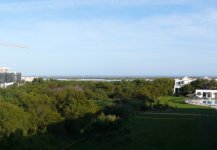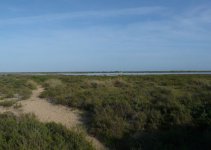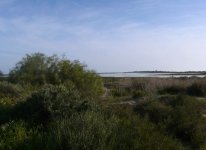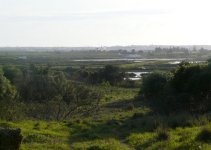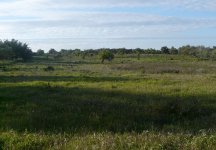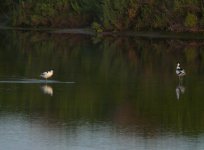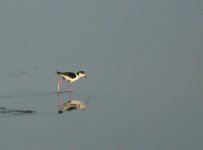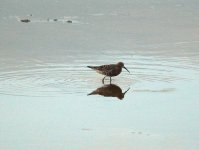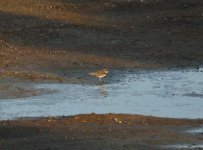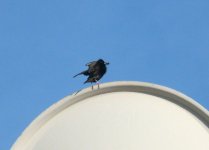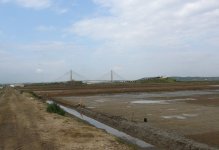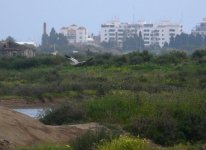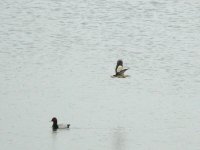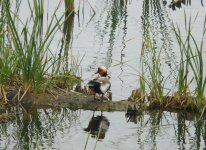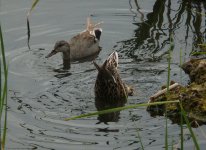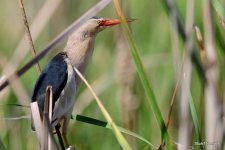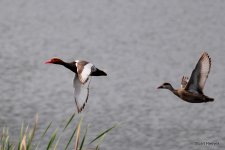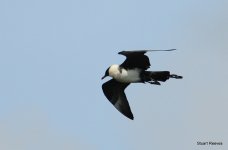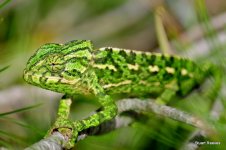
... with volcanic ash related extensions.
I thought I'd have a go at reviving the casual euro-birding traditions of BF with a laid back report on my relaxed break in the Algarve. The trip was only 'semi-birding'. I was mainly just staying somewhere nice to do a bit of work with a bit of pottering about to look for birds every day. I'll break down the report into the different sites I visited, mostly focusing on the area around where I stayed. The flight and accommodation were booked together through Expedia for around £380.
Transport
I flew from Gatwick to Faro on 10th April with Monarch. My original intention was to fly back on 18th April, but that was, of course, scuppered by Eyjafjallajokull or 'the volcano in Iceland' as the newsreaders prefer to call it. Eventually I returned on 22nd.
I hired a car via 'Enjoy Car Hire'. This actually meant that I was hiring from a company called 'International Car'. This was cheap but it took a while for me to find the stall in the airport car park where this company, and a few others, are based. The car was a Chevrolet Matiz, which was a bit rubbish. This was my first time driving on the right. I didn't hit anything, which I'm quite pleased about.
Accommodation
I stayed at Cabanas Park, a resort hotel in the fishing village of Cabanas just a few kilometres east of Tavira. This gets pretty positive reviews online and I certainly wouldn't wish to counter any of those. It's not exactly characterful but was clean and well-maintained. I had a spacious three room appartment, with double bedroom, bathroom and a combined kitchenette and living room. It also had a large balcony, which was nice for birding from when the weather wasn't too bad. The kitchenette meant that I could self-cater, which kept costs down and was very convenient. You could also pay for Internet access at Cabanas Park, although like most hotels this was of somewhat variable quality. The staff were very good I thought, particularly in responding to ash related changes of plan.
The most significant feature of Cabanas Park is that it's an excellent location for birding. Most of the birding I did was within a mile or so of the resort and I eventually managed to record 93 species here. As it's not such a well-known area, I'll go into a bit more detail about the birds and habitats here.
Weather
Well, it was actually very rainy and windy. The first day was fine, warm and sunny but after that it rained on each of the next seven days to at least some extent. Several inches must have fallen in this time and some days there were really torrential downpours. My impression is that this is a bit unusual for the Algarve at this time of year. The 'extension' period was relatively fine, although not that sunny. The bad weather didn't interfere too heavily with my fairly limited birding ambitions. In fact, it resulted in some interesting seawatching from my living room.
I thought I'd have a go at reviving the casual euro-birding traditions of BF with a laid back report on my relaxed break in the Algarve. The trip was only 'semi-birding'. I was mainly just staying somewhere nice to do a bit of work with a bit of pottering about to look for birds every day. I'll break down the report into the different sites I visited, mostly focusing on the area around where I stayed. The flight and accommodation were booked together through Expedia for around £380.
Transport
I flew from Gatwick to Faro on 10th April with Monarch. My original intention was to fly back on 18th April, but that was, of course, scuppered by Eyjafjallajokull or 'the volcano in Iceland' as the newsreaders prefer to call it. Eventually I returned on 22nd.
I hired a car via 'Enjoy Car Hire'. This actually meant that I was hiring from a company called 'International Car'. This was cheap but it took a while for me to find the stall in the airport car park where this company, and a few others, are based. The car was a Chevrolet Matiz, which was a bit rubbish. This was my first time driving on the right. I didn't hit anything, which I'm quite pleased about.
Accommodation
I stayed at Cabanas Park, a resort hotel in the fishing village of Cabanas just a few kilometres east of Tavira. This gets pretty positive reviews online and I certainly wouldn't wish to counter any of those. It's not exactly characterful but was clean and well-maintained. I had a spacious three room appartment, with double bedroom, bathroom and a combined kitchenette and living room. It also had a large balcony, which was nice for birding from when the weather wasn't too bad. The kitchenette meant that I could self-cater, which kept costs down and was very convenient. You could also pay for Internet access at Cabanas Park, although like most hotels this was of somewhat variable quality. The staff were very good I thought, particularly in responding to ash related changes of plan.
The most significant feature of Cabanas Park is that it's an excellent location for birding. Most of the birding I did was within a mile or so of the resort and I eventually managed to record 93 species here. As it's not such a well-known area, I'll go into a bit more detail about the birds and habitats here.
Weather
Well, it was actually very rainy and windy. The first day was fine, warm and sunny but after that it rained on each of the next seven days to at least some extent. Several inches must have fallen in this time and some days there were really torrential downpours. My impression is that this is a bit unusual for the Algarve at this time of year. The 'extension' period was relatively fine, although not that sunny. The bad weather didn't interfere too heavily with my fairly limited birding ambitions. In fact, it resulted in some interesting seawatching from my living room.




